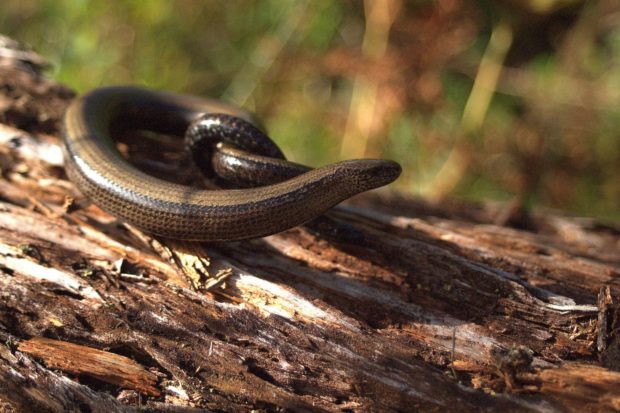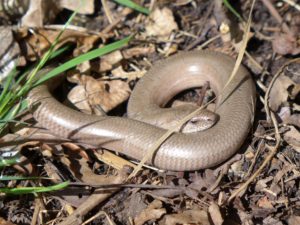Is it a snake, is it a worm? No, it’s a lizard!
Writing this latest edition of my reptile blog whilst looking out into the pouring rain, it feels like spring is a long way away. However, as I already mentioned, the reptiles of the UK have woken up, and this week the focus is on our most widespread lizard, the slow worm. From the tip of Cornwall to the northeast of Scotland, these reptiles can be found in a variety of habitats, and are frequently encountered in gardens and allotments!
Lacking legs, you’d be forgiven for thinking this secretive critter is a snake, but as we learnt on last week’s #TBHFridayChallenge on Facebook, slow worms are 100% lizard. Unlike snakes they have eyelids, and have a notched rather than a completely forked tongue. As a defence mechanism they can also drop their tails, which continue to wriggle around for a few minutes giving the slow worm time to slink away from attackers.
Slow worms tend not to be found out in the open, preferring to bask within vegetation and hide under logs and rocks. You may be lucky enough to come across them whilst gardening, and if you do, try to leave them undisturbed as stressed out individuals may lose their tails (and remember all reptiles and amphibians are protected from harm by law!). A slow worm’s favourite prey is a gardener’s worst enemy, slugs! So why not leave an ‘untidy’ patch of the garden with some logs and rocks mixed in to try and encourage them into your garden!
Tune in next week when my blog will focus on our biggest (and smelliest) native reptile, the grass snake.
Warden Jamie


